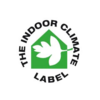
Danish Indoor Climate Label
About (Danish Indoor Climate Label)
The Danish Indoor Climate Label (also known as the "Indoor Climate Label" or "Indeklima Mærket" in Danish) is an initiative developed by the Danish Technological Institute and supported by the Danish Ministry of Environment and Food. The label aims to improve the indoor climate quality in buildings and promote healthier indoor environments for occupants.
The Danish Indoor Climate Label focuses on assessing and certifying buildings based on their indoor climate performance. It takes into consideration various factors that can affect indoor air quality, thermal comfort, and overall occupant well-being. Some key aspects addressed by the label include ventilation, temperature, humidity, and the presence of harmful substances.
The label provides certification for various types of buildings, including residential, educational, healthcare, and office buildings. The certification process involves thorough inspections and measurements carried out by accredited experts. The experts evaluate the building's performance against specific criteria set by the Danish Indoor Climate Label, which are based on national regulations and recognized standards.
Benefits of the Danish Indoor Climate Label include:
Improved indoor air quality: The label ensures that certified buildings have proper ventilation systems in place, promoting the exchange of fresh air and reducing the presence of pollutants and allergens indoors.
Enhanced thermal comfort: The label addresses factors such as temperature and humidity levels to ensure occupants' comfort and well-being.
Health and well-being: By promoting healthier indoor environments, the label contributes to the overall health and well-being of occupants, reducing the risk of respiratory issues, allergies, and other health-related problems.
Consumer confidence: The label serves as a trusted indicator for consumers, enabling them to make informed decisions when choosing buildings or spaces that prioritize indoor climate quality.
Sustainability: The label aligns with sustainable principles by encouraging energy-efficient practices, optimal use of resources, and reduced environmental impact.
It's important to note that the Danish Indoor Climate Label is specific to buildings in Denmark and is primarily focused on the indoor climate aspect. It complements other building certification systems, such as green building certifications, by specifically addressing indoor environmental quality.
For more detailed and up-to-date information about the Danish Indoor Climate Label, its specific criteria, certified buildings, and the certification process, it is recommended to visit the official Danish Indoor Climate Label website or consult with relevant authorities and organizations involved in its implementation.